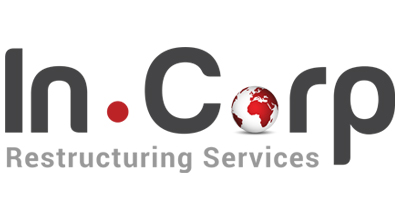Passing the Baton: Succession Simplified for Family Businesses

Passing the Baton: Succession Simplified for Family Businesses
Navigating Ownership and Management Transitions in Family Enterprises
- Last Updated
Succession in family businesses is inevitable and vital for preserving legacy, unity, and continuity. It promotes a sense of belonging among the next generation, ensures harmony, and supports business growth without disruption. Early planning is essential to address issues and enable smooth transitions followed by clear communication amongst the family members. Without a clear roadmap, conflicts are bound to arise over rights and entitlement, roles and responsibilities vis a vis decision-making authority, adversely impacting family harmony and business survival. Without planning, disputes can escalate into lengthy litigation, often dragging through courts for years and requiring concrete evidence for resolution. In essence, private family issues risk becoming public matters!
Although nine out of 10 publicly traded companies in India are family owned or controlled1, ~42% have formal shareholder agreements, ~34% have family constitution or protocol, ~25% have family employment policy in place and ~34% have Testament or last will2. ~40% believe their company will not be fit for purpose in ten years if it stays on its current course. Family businesses focusing on trust-building through ESG (Environment, Sustainability and Governance), DEI (Diversity, Equity and Inclusion) and broader societal concerns are more optimistic about growth. ~59% of Indian businesses prioritizing talent attraction and retention is an indicator of DEI awareness, expect strong future growth. In contrast, ~41% businesses in India are not emphasizing these areas. This calls for action for most of the family businesses to be relevant in next decade.
A family-owned business typically faces varied nature of challenges in different generations depending on family landscape, business complexity, family’s ownership in the business and managerial maturity in the business.
- 1st Generation – Founder’s connect with the business delays the transition to the next generation.
- 2nd Generation – Dynamics are competitive between the siblings.
- 3rd Generation – Multiple heads in the family fragments ownership.
A succession plan should be tailored for every family based on the generational curve that the family is in. Succession planning can have two approaches:
- Succession by ownership
- Succession by management
Succession by Ownership
Succession of ownership in family businesses refer to transferring legal ownership of the business by creating holding vehicle such as a Private Family Trust, Holding company, Family Business holding LLP, etc. or consolidation of family-owned entities through merger/demerger for effective succession from one generation to the next. For a smooth and effective transition, the key building blocks include the following:
- Ownership with purpose
Well-defined shareholding patterns and rights in alignment of future goals of the family.
- Preservation of Culture and Values
Ensure that the company’s core values and culture are maintained during both ownership and management transitions.
- Legal documentation
Setting clear expectation and communication through registered wills, Private Family trusts, shareholder agreements with clarity on role and responsibilities of board members, clarity on reserved matters, exit mechanism – drag along, tag along rights, valuation parameters, family employment policy based on meritocracy, or family constitutions to avoid family disputes.
- Tax and regulatory planning
Addressing inheritance, capital gains, and other tax, stamp duty and other regulatory implications including cross border implication.
- Equitable distribution and family dynamics
Ensuring fairness while protecting business continuity setting aside family ego and personal grudges.
- Governance mechanisms – Protocols for decision-making and conflict resolution
Family protocols, or family governance frameworks, are essential in guiding operations and decision-making in family-owned businesses. They provide a clear roadmap for sensitive processes like management succession, setting guidelines and expectations to mitigate conflicts arising from personal relationships and emotional ties. Engagement of subject matter experts acting as advisors coupled with legal/tax experts, and facilitators to guide complex decisions, mediate conflicts, and ensure objective evaluation is one of the best approach families can adopt. A transparent and smooth transition in both ownership and management can be achieved through well-defined protocols, hence safeguarding family and business’ legacy.
Ownership succession in a family business is a sensitive subject, as it involves emotional interest of the family members. Losing control may feel like losing influence in the business or personal standing in the family. Addressal of these concerns with clear communication and harmony is required. Successful ownership succession in family businesses requires careful and sensitive handling, as it often involves overcoming the emotional resistance of family elders. Letting go of control can create fears about losing influence or diminishing their personal standing within the family. Addressing these concerns with empathy, clear communication with no misunderstanding, trust amongst the family members and structured governance helps ensure that elders feel respected and valued, while the business transitions smoothly to the next generation. Secondly, patience amongst the family members is very critical when it comes to successful transition.
Succession by Management
Succession of management in family businesses involves transferring leadership and operational responsibilities to the next generation or professional managers. It is a gradual process that requires early initiation to ensure continuity and stability. Key elements include identifying and grooming potential candidate as successors, providing them with mentoring and necessary skills, inculcating integrity, business ethics and family values amongst the potential successors to ensure the name and fame for family business continues with legacy, and ensuring they gain relevant experience of handling business in bad weather. The transition should be carefully planned to minimize disruptions, with clearly defined roles and responsibilities for the new management. A structured approach not only builds competence and confidence in successors but also fosters trust within the family and business stakeholders.
Important aspects to be considered for effective transition
- Timing of Transition
Succession in a family business is inherently subjective, shaped by both internal and external forces.Internally, it is driven by the current owners’ willingness and readiness to shift leadership, the firm’s growth prospects relative to skill-set gaps, operational and financial stability, and the need to balance harmony, relationships, and expectations among family members.Externally, it depends on agility in adapting to market change—technology upgrades, disruptive supply-chain dynamics, and rapid global regulatory shifts—along with access to alternative financing aligned with evolving ESG and DEI priorities. Together, these factors determine the pace and shape of any transition.
- Impartial approach in selecting next leaders
Gender-neutral meritocracy in the selection process is crucial for effective management succession. However, in family-run businesses, this can be particularly challenging, as emotional attachments and the inclination to retain leadership within the family often influence decisions when it is compared with external non–family talent. Balancing family expectations with objective evaluation is essential to ensure that leadership is entrusted to individuals, whether family or non-family, based on who possess the competence, vision, and commitment needed to drive the business forward.
- Grooming of future leaders
In family businesses, providing younger family members or identified key employees with structured development opportunities and mentorship is a crucial and unavoidable step. This preparation equips them with the necessary skills, values, and experience to take on future leadership roles effectively, ensuring continuity and long-term success of the business.
- Preserving Values and Culture in Family Business Succession
The entire transition must be carefully planned to ensure that the company’s core values, and culture remain intact. Preserving these foundations during succession not only maintains the legacy and identity of the business but also reinforces trust among employees, customers, and stakeholders, ensuring continuity and long-term sustainability.
- Communication strategy is the must
Transparent communication system, conflict resolution mechanisms, professional facilitation, and establishing a feedback system is necessary for effective and harmonious transition.However, succession by management need to set external perception of stakeholders such as supplies chain participants- suppliers, customers, bankers, permanent and contractual employees in right context with respect to values and culture. Each generation may have a distinct approach to business, particularly regarding work culture, which can create friction and challenges in aligning strategies and operations. Secondly, family relationships can complicate professional interactions, often giving rise to emotional conflicts that may influence or hinder objective decision-making within the business. To navigate generational differences and potential conflicts, strategic planning, open communication, and mediation play a central role in ensuring alignment and harmony within the family business.
Navigating Regulatory and Tax aspects in Business Succession

Related Read: Will vs Family Trust: What’s The Difference?
Family succession involves transferring assets, business interests, or shares from one generation to the next. If not planned efficiently, these transfers can have significant tax implications. The tax and regulatory aspects are complex and vary depending on the chosen method of succession, making careful planning essential to minimize liabilities and ensure a smooth transition. Generally, one must scan through at least five regulations:
- Income Tax provisions on transfer of assets by way of transmission (through Will) or transfer to Private family Trust, holding entities. In case of cross border holding, implication of double tax treaty on income, remittances, inheritance tax implication and foreign assets reporting guidelines need to be adhered.
- Companies Act provisions on transmission as well as transfer of shareholding with disclosure requirements, necessary board and general meetings’ approvals need to be understood.
- Securities and Exchange Board of India (SEBI) Takeover Regulations on transmission through Will and transfer through change of shareholding.
- Foreign Exchange regulation w.r.t holding of assets, shareholding by non-resident or holding of overseas investments by Residents, Foreign Direct Investment (FDI)/Overseas Direct Investment (ODI) guidelines, Liberalised Remittance Scheme (LRS applicability).
- Stamp Duty implication is the most critical aspect. The situs of assets, nature of assets plays a crucial role in deciding stamp duty applicable rate in particular state.
Conclusion
Succession in family businesses is critical for preserving legacy, ensuring continuity, and fostering harmony among generations. Effective planning—covering ownership and management transitions, requires early initiation, merit-based selection, grooming of successors, and preservation of values and culture. Transparent communication, conflict resolution, and structured governance are essential to navigate emotional and generational challenges. Tax and regulatory considerations must be carefully addressed to minimize liabilities and ensure smooth transfer of assets and shares. Overall, a well-planned, empathetic, and structured succession strategy safeguards both the family’s legacy and the long-term sustainability of the business.
Why Choose InCorp Advisory?
At InCorp, our seasoned consultants take the time to understand your family’s unique dynamics and business goals. We design customized family business succession plans that align with your vision, ensuring a seamless transition of wealth and leadership. As your trusted partner, InCorp provides end-to-end guidance, from strategic legacy planning to meticulous execution, safeguarding your legacy for future generations. For any inquiries or support, contact us at info@incorpadvisory.in or call (+91) 77380 66622.
References
1. A family feud, millennial money culture and a controversial coronation – Mint Article dated. 12/05/2023
2. PwC’s 11th India Family Business Survey – December 2023
Authored by:
Samir Sanghvi | Family Office
FAQs
Start early, well before any health, age, or liquidity trigger. A practical rule is to begin formal planning when the next generation enters the business or when the founder is still actively leading, so there’s time for phased hand-offs, mentoring, and consensus-building.
A family constitution is a short, written charter that sets the family’s rules for values, roles, decision-making, ownership, and conflict resolution in the business. It’s a moral compact (not a law), so key parts should be mirrored in enforceable documents like a will, trust deed, and shareholders’ agreement.
Use a private family trust/guardian arrangement to hold shares till majority; trustees/guardians vote, minors receive dividends/benefits, and a buy–sell/valuation clause prevents deadlock.
Separate ownership from management. Keep family ownership, hire professional management in the company, and build a development plan for interested heirs.
Share
Share




































































